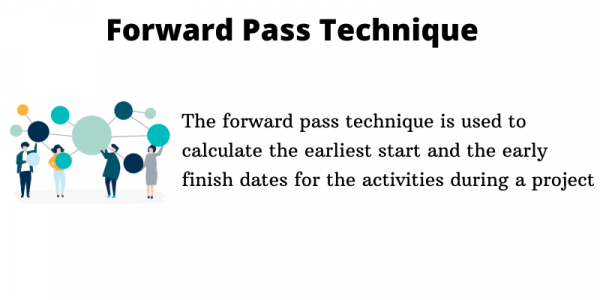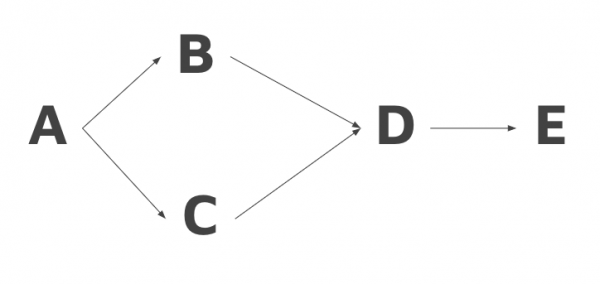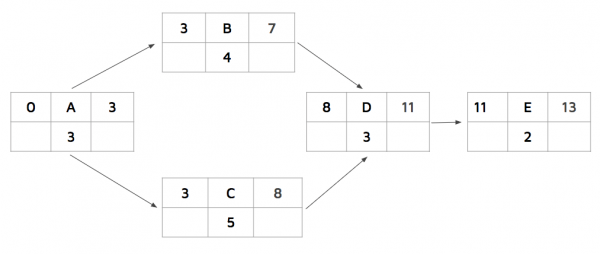The forward pass technique is a well-known method used in critical path analysis. This technique involves passing information about the progress of a project from one task to another in a forward direction. Doing this allows for a more accurate understanding of the project’s timeline and what tasks need to be completed.
Also known as the forward scheduling technique, the forward pass technique is used to calculate the earliest start and the early finish dates for the activities during a project. This will help you to advance in your diagram network.
- Importance Of The Forward Pass Technique
- Understanding Early Finish and Latest finish
- Using Forward Pass Technique
- Example using the Forward Pass with Project Management
- Forward Pass vs Backward Pass in Project Management
- Potential problems employing the Forward Pass Technique only
- What is Forward Pass in Project Management?
- What are Forward Passes and Backward Passes in CPM?
- What is the critical path of a project?
This will determine the total duration of the project and it will help you to find the free-float tasks and the critical path of the project This technique is considered to be a top-down approach to project scheduling. In this approach, the project manager starts with the first activity in the project and then schedules all the other activities based on the dependency relationships between them.
Importance Of The Forward Pass Technique
The forward pass technique is a very important tool for project managers. As it helps you to:
- It helps them to create a realistic schedule for the project and also to identify any potential problems and risks that may arise during or later down the execution of the project.
- It is a powerful tool that can be used in project management to help you optimize your project schedule.
Using the forward pass technique can help you make sure that your project is on track and that you are making the most efficient use of your resources.

Understanding Early Finish and Latest finish
Early start and early finish are two of the most important concepts in the forward pass technique.
- An early start is the earliest possible time that an activity can begin.
- Based on the predecessor task, an Early finish is the earliest possible time that an activity can end.
Early start and early finish are important because they help you to understand the relationships between activities.
Early start and early finish are also important because they help you schedule resources.
For example:
- If you know the early start and early finish for an activity, you can assign resources to that activity. This helps you to make sure that the activity is completed on time.
In project management, the early start and early finish (ES-EF) technique is used to determine the earliest possible start and finish dates for the activities in a project.
This technique is used in conjunction with the late start and late finish (LE-LF) technique to create a forward pass through the project.
To do this, the ES and EF values for the predecessor activities are determined first.
Using Forward Pass Technique
First, we need to understand that the Critical Path Method (CPM) is a popular tool used by project managers to plan and track the progress of a project. This is a technique used to identify the sequence of activities that must be completed in order to finish the project on time.
One of the key steps in using CPM is when to calculate the forward pass. The forward pass is the point in the project where all activities have been sequenced and the earliest possible finish date can be determined.
In a nutshell, when you need to calculate the forward pass, you will need to know the following:
- The duration of each activity
- The dependencies between activities
- The earliest start date for each activity
With this information, you can then calculate the earliest possible finish date for the project. There are a few steps involved in calculating the forward pass:
- Identify the activities that need to be scheduled.
- Determine the duration of each activity.
- Identify the dependencies between the activities.
- Calculate the earliest start date for each activity.
- Calculate the earliest finish date for each activity.
- Create the project schedule.
As you can see, the forward pass is a critical part of creating the project schedule. By understanding how to calculate the forward pass, you can ensure that your project stays on track.
Example using the Forward Pass with Project Management
Let’s take an example using the images below.
- Imagine you are in charge of a project that has five different tasks as we see in the image below.

- Considering how tasks are going to be performed we can see that:
- Tasks B and C totally depend on A.
- D depends on B and C.
- And E, which is the final one depends on D

Now to determine our Forward Pass technique we need to determine the ES (early start) and EF (early finish) of the tasks.
Then every task or activity should be portrayed with the current square as shown below:

Now we the example above, we can calculate the following:
- Task A will take 3 days
- Task B will take 4 days to be completed plus the 3 days from A which will give us a total of 7 days
- Task C will take 5 days plus the 3 days from Task A during this section our early finish will be a total of 8 days
- Task D will take 3 days and we must consider the longest task from the previous ones which in this case will be task C, that would give us a total of 11 days
- Finally, on task E we will consider the last 11 days from the D section task and we will have a total of 13 which will be the total time for completion of our project.

Forward Pass vs Backward Pass in Project Management
Both methods are used in conjunction with the Critical Path Method (CPM), which is a technique used to identify the sequence of activities that must be completed on time in order for the project to be completed on schedule.
In project management, the terms “forward pass” and “backward pass” refer to the process of network analysis.
A forward pass is used to determine the earliest start and finish dates for the project activities, while a backward pass is used to determine the latest start and finish dates.
The main difference between a forward pass and a backward pass is that a forward pass is used to calculate the early dates, while a backward pass is used to calculate the late dates.
By understanding the difference between a forward pass and a backward pass, project managers can develop more accurate project schedules and timelines.
Potential problems employing the Forward Pass Technique only
Employing the forward pass technique is a commonly used approach in project management when attempting to create a schedule. However, this technique can often lead to several potential drawbacks.
- One potential drawback is that the forward pass technique can lead to overly optimistic scheduling.
This can happen because the technique only looks at the resources required for each activity, and does not take into account other potential risks or constraints that could impact the project.
This can often cause problems later on in the project when these risks or constraints are realized.
- Another potential drawback is that the forward pass technique can often lead to unrealistic schedules. This is because the technique does not consider the time required for tasks to be completed, which can often lead to activities being scheduled too close together.
This can cause problems for project teams as they may not be able to complete all of the tasks in the time allotted.
- Another main drawback is that it does not explicitly consider the possibility of future events that could impact the project. This can lead to potential problems down the line if unforeseen events do occur.
- Finally, another potential drawback is that the Forward Pass Technique can lead to a false sense of security. This is because it assumes that all tasks will be completed on time and as planned. However, in the real world, this is often not the case. This can lead to project delays and other problems.
Overall, the Forward Pass Technique is a helpful tool in project management. However, it is important to be aware of its potential drawbacks before using it.
What is Forward Pass in Project Management?
The forward pass is the process of calculating the early and late start dates of the activities in the network diagram. This is done by working forwards from the project’s start date. The early start date is the earliest date that an activity can start, while the late start date is the latest date that an activity can start without delaying the project.
What are Forward Passes and Backward Passes in CPM?
When identifying the Critical Path method of a project, we use the forward pass to calculate the earliest start and finish dates of activities, and the backward pass to calculate the latest start and finish dates.
What is the critical path of a project?
The critical path is the sequence of activities that determines the duration of a project. This sequence is made up of the activities that must be completed in order to finish the project on time. It helps them to understand which activities are most important to the success of the project. It also helps managers to identify which activities are on the critical path and which are not.
